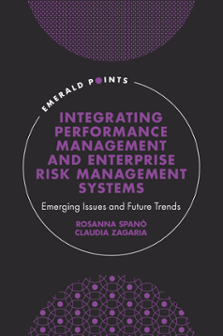
Index
Integrating Performance Management and Enterprise Risk Management Systems
ISBN: 978-1-80117-152-6, eISBN: 978-1-80117-151-9
Publication date: 18 April 2022
Citation
Spanò, R. and Zagaria, C. (2022), "Index", Integrating Performance Management and Enterprise Risk Management Systems, Emerald Publishing Limited, Leeds, pp. 97-100. https://doi.org/10.1108/978-1-80117-151-920221006
Publisher
:Emerald Publishing Limited
Copyright © 2022 Rosanna Spanò and Claudia Zagaria. Published under exclusive licence by Emerald Publishing Limited